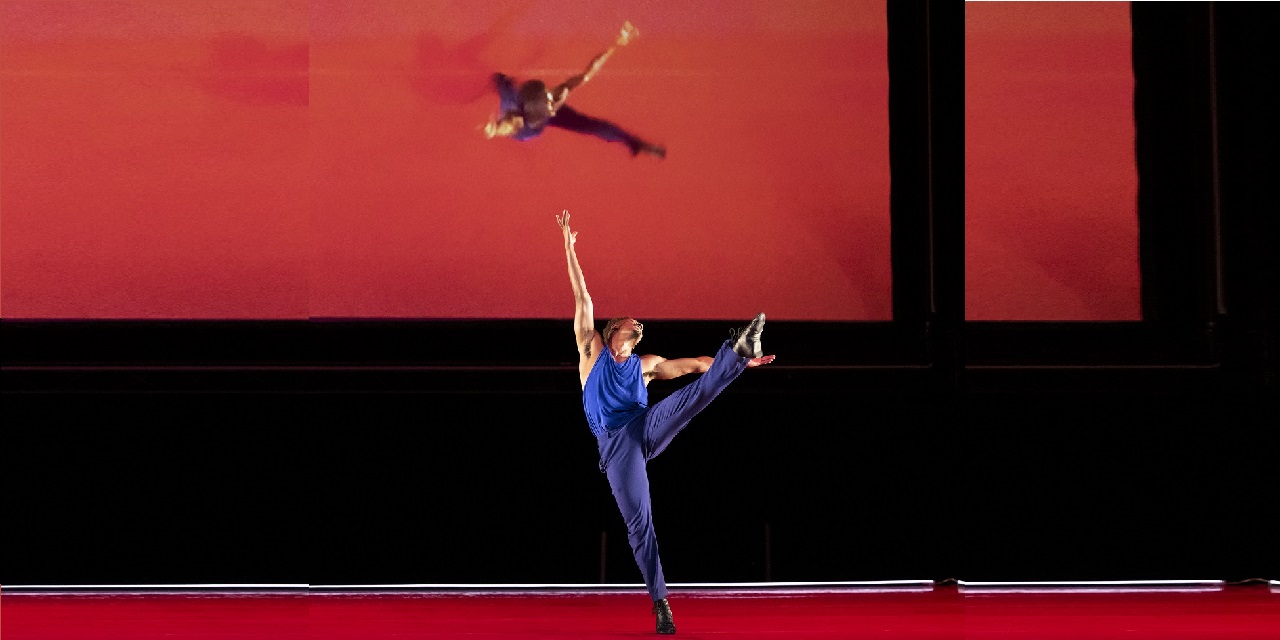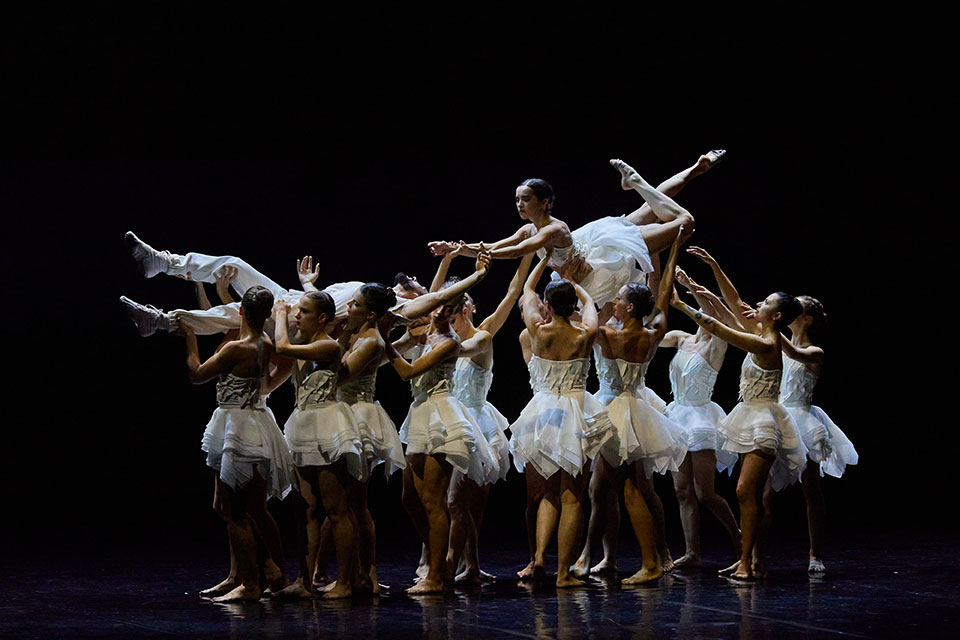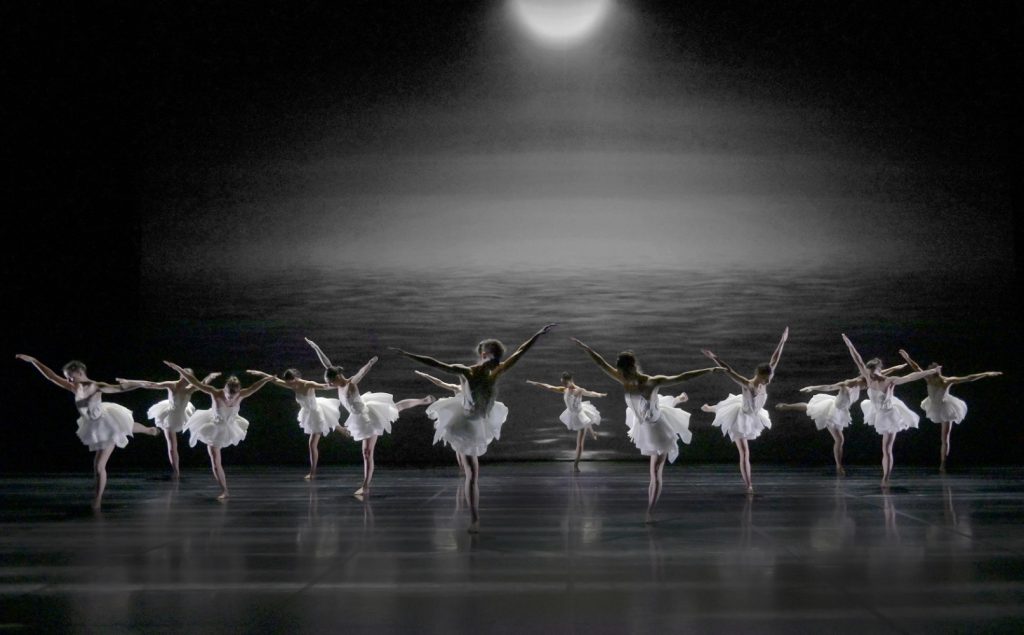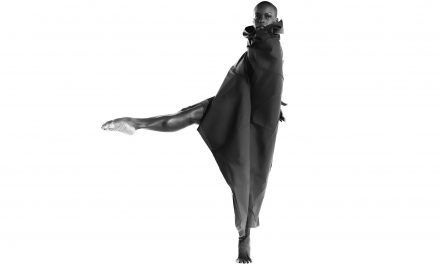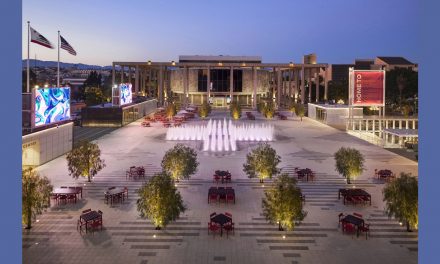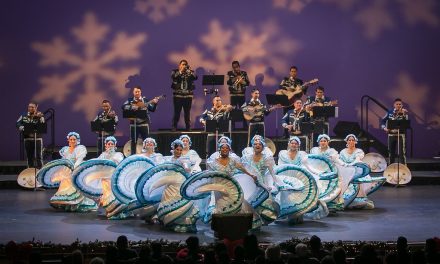Two leading contemporary dance choreographers, Angelin Preljocaj and Benjamin Millepied—both Frenchman who direct Ballet Preljocaj and LA Dance Project, respectively—debuted new versions of canonical ballets in Southern California this year. Preljocaj’s Swan Lake premiered in Santa Barbara in February, and Millepied’s Romeo & Juliet premiered in Costa Mesa in May.
Re-energizing classical ballets has been a trend, with Christopher Wheeldon (Cinderella), Alexei Ratmansky (Sleeping Beauty), and Matthew Bourne (Swan Lake), among others, each remaking productions from their own aesthetic perspectives. But, Preljocaj’s and Millepied’s reimaginations have striking parallels in their modern and multidisciplinary approach: both retell iconic love stories within today’s social and political context and use digital technology to heighten the drama and immediacy of the action.
Thematically, Preljocaj’s apocryphal interpretation of Swan Lake is an allegory on climate change and industrialism, conceiving of Odette as a Greta Thunberg-like heroine. The evil sorcerer von Rothbart becomes a capitalist seeking to exploit fossil fuels, and despite Siegfried’s and Odette’s efforts to thwart his plans, Odette and her swans die in a polluted lake. The ballet ends tragically with a projected blackened sun shrouding the withering swans.
In portraying an ecological disaster through dance, Preljocaj wanted to “keep the emotion” of the central couple while “questioning our period with the thematic [content] of the past,” transforming the fairy-tale into a story about our current climate crisis.

LA Dance Project – Photo by Julien Benhamou
Similarly, Millepied sought “to figure out how to strip [Romeo & Juliet] and make it modern.” Twelve of LA Dance Project’s dancers dressed in streetwear represent the warring families, but there are no hostile parents or the tragically unhelpful Friar Lawrence. Importantly, Romeo and Juliet are not necessarily a man and a woman. Some performances include a heterosexual couple while others feature two men or two women dancing the title roles. As a symbol of equality, the choreography is unchanged across castings. The work “represents love through different faces,” imbuing the ill-fated love story with a progressive social consciousness.
Creative use of digital technology pervades both works, amplifying these contemporary themes and their narrative power. To invent a “phantasm of reality” in his words, Preljocaj collaborated with artist Boris Labbé to create sci-fi video projections that contrast good and evil. Images of dark, Gotham City-like skyscrapers zoom in and out as von Rothbart displays his property development plans, and undulating waves and sun rays project behind the angelic swans. Toward the end of the ballet, a “moving painting” of drilling equipment gradually enlarges and destroys a placid lake setting to spell ecological doom.
While Preljocaj employs animation to signal the gravity of a degrading physical environment, Millepied uses cinematography to make his characters’ emotions visceral. In his Romeo & Juliet, a steady-cam operator circles the dancers onstage and off, and close-up videos are projected back to the audience as a live stream. The characters’ passions, pulse, and perspiration become immediate. To heighten the tenderness of the ballet’s famous balcony scene, for example, the lovers leave the stage to dance and embrace throughout the theater and outside environs, and the live stream lets the audience in on the characters’ steamy intimacy. Capturing rage in equal measure, the steady-cam also follows Tybalt to his backstage lair as he prepares to kill his rival Mercutio, zeroing in on his look of revenge.
Such innovation is not to be misunderstood as iconoclasm, however, as both choreographers revisit the storybook ballets with a sense of reverence, not rejection. Indeed, both have remarked that the beauty of the classical scores drew them to re-choreograph the ballets with their distinctive movement vocabularies. Preljocaj excerpts Pyotr Illyich Tchaikovsky’s Swan Lake score, and he intermixed the orchestral music with electronic sounds for a discotheque scene to symbolize pollution, industry, and nightmare—from which Tchaikovsky’s melodies serve as a relief. “Then when you hear the Tchaikovsky after that [electronic sound], [it is] even more beautiful, giving you a desire to go back to Tchaikovsky,” said Preljocaj. The new is intended to make us desire more of the old. Millepied, for his part, describes Sergei Prokofiev’s Romeo & Juliet score as “glorious” and one “that stays with you,” ultimately employing it for his new work as both a film score and dance music.
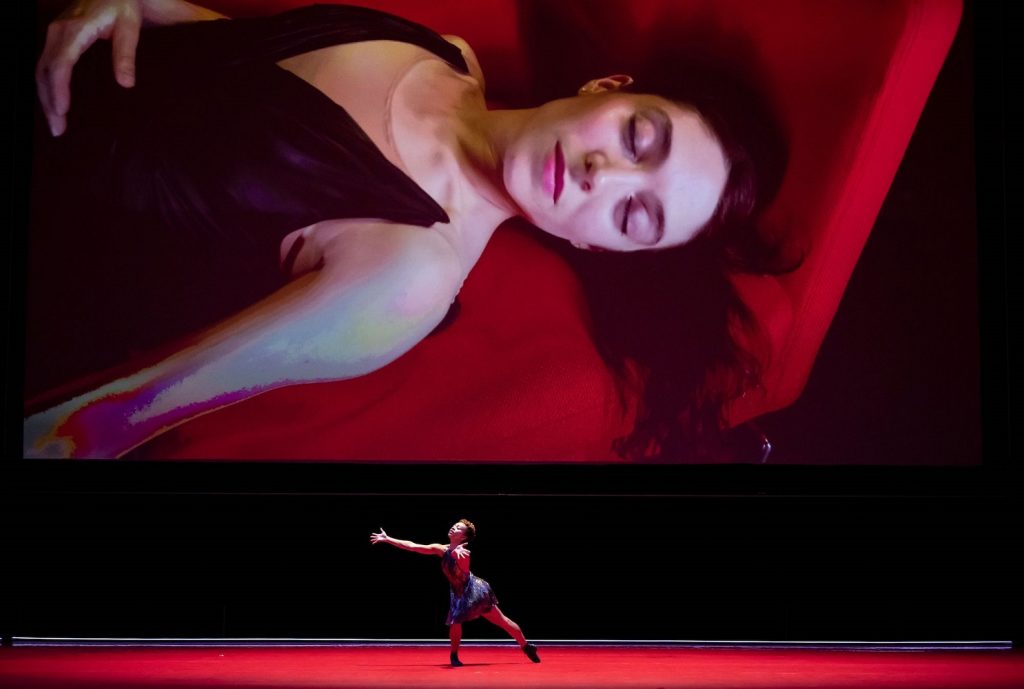
LA Dance Project – Nayomi Van Brunt (below), Daphne Fernberger in “Romeo & Juliet Suite” by Benjamin Millepied – Photo by Julien Benhamou
Both classical scores are so enduring that Preljocaj and Millepied use them to tell contemporary stories with modern tools, thereby furthering the music’s legacy. Their reimagined dance works are not intended to supersede the original 19th century versions, but to dispel a notion that live theater and screen time are necessarily opposites in our 21st century entertainment landscape. The choreographers answer the question of why these ballets now.
For more information about Ballet Preljocaj, please visit their website.
For more information about L.A. Dance Project, please visit their website.
Written by Laura Goodall for LA Dance Chronicle.
Featured image: LADP – David Adrian Freeland Jr. in Benjamin Millepied’s Romeo and Juliet Suite – Photo by Julien Benhamou

